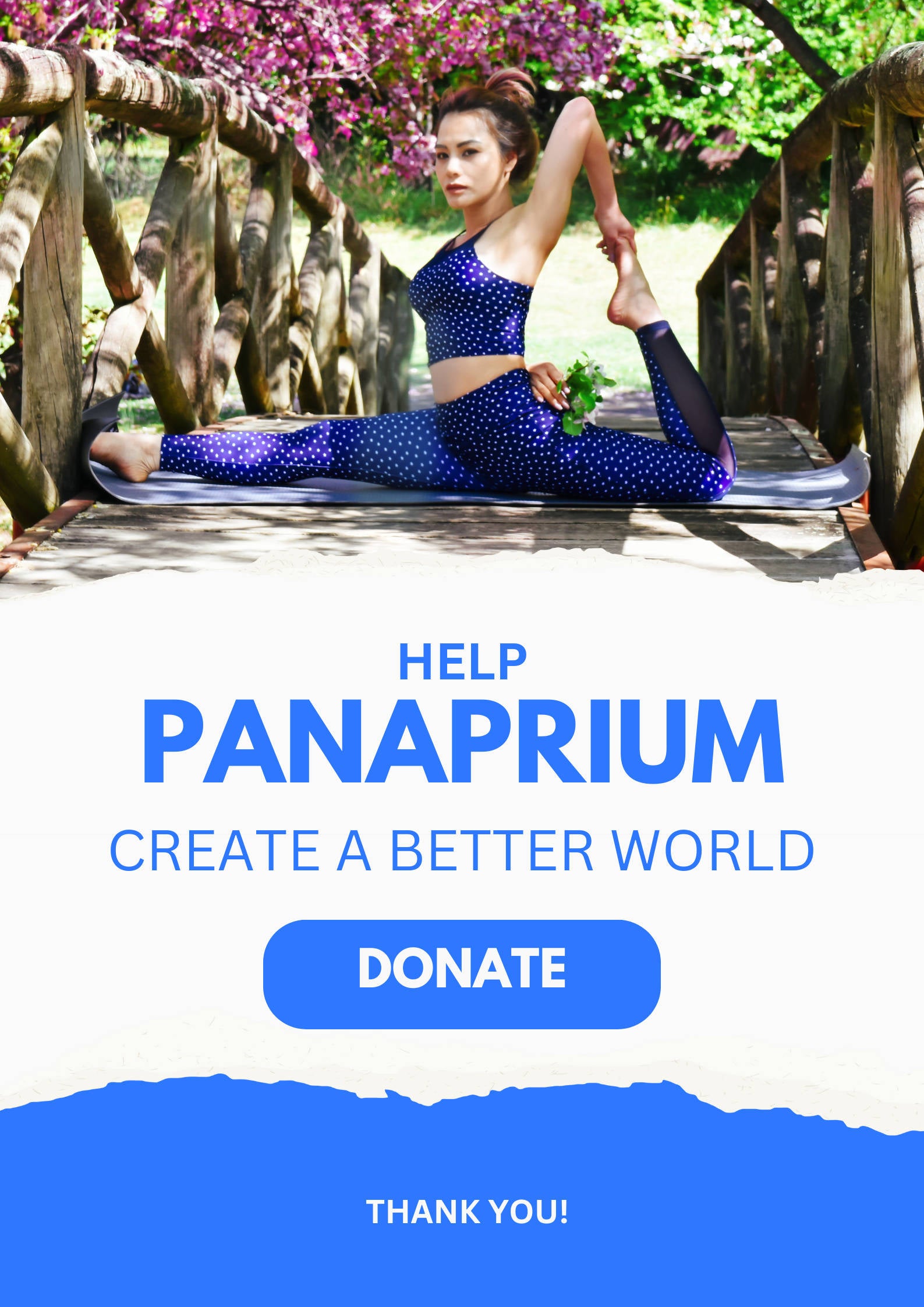
La guérison chamanique, une pratique spirituelle ancrée dans d'anciennes traditions autochtones, gagne en popularité dans le monde du bien-être moderne. De la purification énergétique et du ressourcement spirituel aux cérémonies de plantes médicinales, de plus en plus de personnes explorent ces pratiques en quête d'une profonde guérison émotionnelle et spirituelle.
Mais avec cet intérêt croissant vient une question importante : la guérison chamanique est-elle sûre ?
Cet article examine la guérison chamanique sous différents angles – psychologique, physique, spirituel et culturel – afin d'apporter une réponse complète. Si de nombreuses personnes font état de résultats transformateurs, d'autres ont éprouvé de la confusion, un bouleversement émotionnel, voire des souffrances. La sécurité de la guérison chamanique dépend de nombreux facteurs, notamment du praticien, de la santé mentale du client et des méthodes utilisées.
Panaprium est indépendant et pris en charge par les lecteurs. Si vous achetez quelque chose via notre lien, nous pouvons gagner une commission. Si vous le pouvez, veuillez nous soutenir sur une base mensuelle. La mise en place prend moins d'une minute et vous aurez un impact important chaque mois. Merci!
Qu'est-ce que la guérison chamanique ?
La guérison chamanique implique l'accès à des états de conscience modifiés – souvent par le biais de percussions, de chants, de respirations, de jeûnes ou de plantes sacrées – pour interagir avec les dimensions spirituelles. Les chamans ou les praticiens pratiquent des rituels pour rétablir l'équilibre, lever les blocages énergétiques, récupérer des fragments d'âme ou solliciter l'aide d'alliés spirituels.
Les techniques courantes comprennent :
-
Récupération de l'âme (restauration de l'énergie perdue en raison d'un traumatisme)
-
Extraction d'énergie (élimination des énergies intrusives ou stagnantes)
-
Récupération d'animaux de puissance
-
Travail cérémoniel (nettoyage, bénédiction, guérison ancestrale)
-
Voyages de médecine végétale (par exemple, ayahuasca, San Pedro)
Ces pratiques visent à guérir la cause profonde de la souffrance, souvent considérée comme une déconnexion de l’âme, de la nature ou de l’esprit.
Pourquoi les gens se tournent vers la guérison chamanique
Nombreux sont ceux qui ont recours à la guérison chamanique lorsque les thérapies conventionnelles se révèlent inefficaces. Certains y sont attirés pour leur développement spirituel, d'autres pour surmonter un traumatisme, l'anxiété, le deuil ou des transitions de vie. Son attrait réside dans son approche holistique, qui considère le corps, l'esprit, les émotions et l'âme comme un tout.
Cependant, comme pour toute modalité de guérison, il est essentiel de comprendre à la fois les avantages potentiels et les risques .
Les avantages : pourquoi beaucoup disent que c'est sûr et transformateur
De nombreuses personnes rapportent que la guérison chamanique les a aidées :
-
Libérer les traumatismes auxquels ils n'avaient pas accès grâce à la thérapie par la parole
-
Retrouver un sentiment de puissance, de clarté et de paix intérieure
-
Guérir les schémas émotionnels chroniques
-
Connectez-vous à l'intuition, aux ancêtres ou à l'esprit
-
Sentez-vous plus léger, plus clair et plus aligné
De plus en plus de recherches portent également sur les bienfaits psychologiques des états modifiés de conscience , tels que ceux induits par le tambour ou la phytothérapie. Ces états peuvent favoriser la neuroplasticité, la libération émotionnelle et les changements de perspective.
Mais les mêmes processus qui facilitent la guérison peuvent également conduire à une vulnérabilité émotionnelle , surtout lorsqu’ils ne sont pas guidés avec soin.
La question de la sécurité : quels sont les risques potentiels ?
Décomposons les risques en différentes catégories afin que vous puissiez voir où des inquiétudes peuvent survenir.
1. Risques psychologiques
La guérison chamanique peut faire ressurgir des traumatismes refoulés, des deuils non résolus ou des peurs inconscientes . Pour beaucoup, c'est une forme de guérison. Mais pour d'autres, notamment ceux dont la santé mentale est fragile, elle peut conduire à :
-
Débordement émotionnel
-
Crises d'anxiété ou de panique
-
Symptômes de type psychotique
-
Confusion spirituelle ou perturbation de l'identité
Selon une étude de 2022 publiée dans Frontiers in Psychology , les états modifiés tels que ceux utilisés dans la pratique chamanique peuvent être thérapeutiques, mais peuvent également déstabiliser les individus vulnérables , en particulier ceux ayant des antécédents de psychose, de trouble bipolaire ou de SSPT.
En résumé : la guérison chamanique est puissante. Mais ce pouvoir peut être déstabilisant sans un soutien, une préparation et une intégration adéquats.
2. Risques physiques (en particulier avec la phytothérapie)
Certaines guérisons chamaniques incluent l’utilisation de plantes psychoactives telles que :
-
Ayahuasca (d'Amazonie)
-
San Pedro ou Huachuma (un cactus à la mescaline)
-
Iboga (une écorce de racine d'Afrique)
Ces cérémonies sont souvent intenses, tant physiquement qu'émotionnellement. Si certains participants font état de guérisons miraculeuses, il existe des cas documentés de :
-
Vomissements et purges
-
Complications cardiovasculaires
-
Interactions avec les médicaments (en particulier les antidépresseurs)
-
Convulsions ou décès (rares, mais signalés dans des contextes mal supervisés)
Selon un article de 2017 paru dans le Journal of Psychoactive Drugs , la plupart des réactions indésirables surviennent lorsque les participants ne sont pas préparés, ne sont pas sélectionnés ou sont dirigés par des animateurs non qualifiés .
Conseil : si vous envisagez de recourir à la médecine par les plantes, renseignez-vous sur la cérémonie, renseignez-vous sur les examens médicaux et divulguez tous les médicaments et problèmes de santé.
3. Risques spirituels ou énergétiques
Les traditions chamaniques croient à la possession spirituelle, aux attachements énergétiques et à la fragmentation de l'âme . Que l'on considère ces aspects au sens littéral ou symbolique, la guérison chamanique peut ouvrir des « portes » émotionnelles ou spirituelles parfois déstabilisantes.
Les risques potentiels incluent :
-
Se sentir « pas soi-même » après une séance
-
Difficulté à s'ancrer ou à revenir à la vie normale
-
Contournement spirituel (éviter le travail psychologique au profit d'expériences mystiques)
-
S'ouvrir aux énergies que vous ne comprenez pas ou que vous ne pouvez pas gérer
Ces cas ne sont pas courants, mais ils sont signalés, en particulier par des personnes qui se lancent trop rapidement dans des pratiques spirituelles, sans soutien ni préparation appropriés.
4. Préoccupations culturelles et éthiques
L'appropriation culturelle constitue un autre problème. Nombreux sont ceux qui proposent des services « chamaniques » sans comprendre le contexte culturel ou éthique de ces pratiques. Cela peut entraîner :
-
Pratiques superficielles ou dangereuses
-
Abus de rituels sacrés
-
Manque de respect envers les communautés autochtones
Travailler avec des chamans non formés ou autoproclamés peut vous mettre en danger émotionnellement, financièrement ou spirituellement.
Qu’est-ce qui rend la guérison chamanique sûre ?
Voici les facteurs qui font une énorme différence pour savoir si une expérience chamanique est sûre, stimulante ou nocive :
1. L'intégrité et la formation du praticien
Recherchez quelqu'un qui est :
-
Formé dans une lignée ou une tradition authentique
-
Tenant compte des traumatismes
-
Transparence sur leurs origines
-
Prêt à vous orienter vers d'autres professionnels si nécessaire
-
Ne pas faire de promesses ou de diagnostics irréalistes
Évitez les praticiens qui :
-
Prétendre avoir toutes les réponses
-
Vous faire pression pour que vous payiez de grosses sommes à l'avance
-
Ignorez vos inquiétudes ou votre inconfort
-
Encourager la dépendance
2. Votre préparation psychologique
Demandez-vous :
-
Suis-je suffisamment stable mentalement et émotionnellement pour un travail intérieur profond ?
-
Ai-je un thérapeute, un coach ou un système de soutien pour m’aider à m’intégrer ?
-
Est-ce que je fais cela par simple ancrage ou pour échapper à ma douleur ?
La guérison chamanique peut amplifier ce qui est déjà en vous. Préparez-vous.
3. Cadre, préparation et intégration
Une séance de guérison sécuritaire comprend :
-
Un espace sûr et calme
-
Des intentions claires fixées à l'avance
-
Mise à la terre douce par la suite
-
Accompagnement de suivi pour intégrer l'expérience
Si vous travaillez avec des plantes médicinales, assurez-vous qu'il y a :
-
Examen médical
-
Facilitateurs ou guérisseurs formés
-
Accès à un suivi ou à un soutien thérapeutique
4. Participation volontaire et consentement
Tout rituel ou soin ne doit être effectué qu'avec votre consentement explicite . La coercition, le secret ou une confiance aveugle peuvent conduire à des situations dangereuses.
Vous avez toujours le droit de :
-
Poser des questions
-
Arrêter une session
-
Refuser les rituels ou les suggestions
Ce que dit la recherche
Bien que la recherche formelle soit encore en développement, plusieurs études suggèrent que la guérison chamanique peut être sûre et bénéfique lorsqu'elle est pratiquée de manière responsable :
-
Une étude de 2013 sur la santé mentale, la religion et la culture a révélé que la guérison chamanique améliorait le bien-être des participants souffrant de problèmes émotionnels chroniques, en particulier lorsqu'elle était associée à une thérapie d'intégration.
-
Une étude de 2018 publiée dans Frontiers in Pharmacology a montré qu'une utilisation soigneusement guidée de l'ayahuasca entraînait une amélioration des scores de dépression et d'anxiété , avec des effets secondaires minimes lorsque les participants étaient sélectionnés et soutenus.
-
Une enquête menée en 2021 auprès de chercheurs spirituels a révélé que les personnes rapportaient de plus grands bénéfices à long terme du travail chamanique lorsqu'elles s'étaient préparées et avaient accès à un soutien après la cérémonie.
Conclusion : la guérison chamanique est-elle sûre ?
Oui, mais seulement dans de bonnes conditions. La guérison chamanique peut être profondément sûre, apaisante et transformatrice si :
-
Le praticien est expérimenté et éthique
-
Vous êtes psychologiquement stable et bien préparé
-
Vous prenez le temps d’intégrer et de réfléchir
-
Vous abordez la pratique avec respect et responsabilité personnelle
Mais cela peut aussi être déstabilisant, voire dangereux, lorsqu’on l’aborde avec négligence, sans soutien ou entre les mains d’un facilitateur non qualifié.
Comme toute méthode de guérison puissante, la guérison chamanique n'est pas une solution miracle. Elle exige courage, discernement et intégration . Elle ne convient pas à tout le monde, mais pour ceux qui se sentent appelés, elle peut être une porte vers la plénitude.
Réflexions finales
En fin de compte, la sécurité de la guérison chamanique dépend moins de la pratique elle-même que de la manière, de la raison et de la personne avec qui elle est pratiquée.
Si vous envisagez une séance, renseignez-vous. Posez des questions. Écoutez votre intuition. Et surtout, gardez les pieds sur terre. La véritable guérison n'est pas seulement mystique : elle est aussi pratique, respectueuse et sûre.
Cet article vous a-t-il été utile ? S'il vous plaît dites-nous ce que vous avez aimé ou n'avez pas aimé dans les commentaires ci-dessous.
About the Author: Alex Assoune
Contre Quoi Nous Luttons
Les groupes multinationaux surproduisent des produits bon marché dans les pays les plus pauvres.
Des usines de production où les conditions s’apparentent à celles d’ateliers clandestins et qui sous-payent les travailleurs.
Des conglomérats médiatiques faisant la promotion de produits non éthiques et non durables.
De mauvais acteurs encourageant la surconsommation par un comportement inconscient.
- - - -
Heureusement, nous avons nos supporters, dont vous.
Panaprium est financé par des lecteurs comme vous qui souhaitent nous rejoindre dans notre mission visant à rendre le monde entièrement respectueux de l'environnement.
Si vous le pouvez, veuillez nous soutenir sur une base mensuelle. Cela prend moins d'une minute et vous aurez un impact important chaque mois. Merci.































0 commentaire